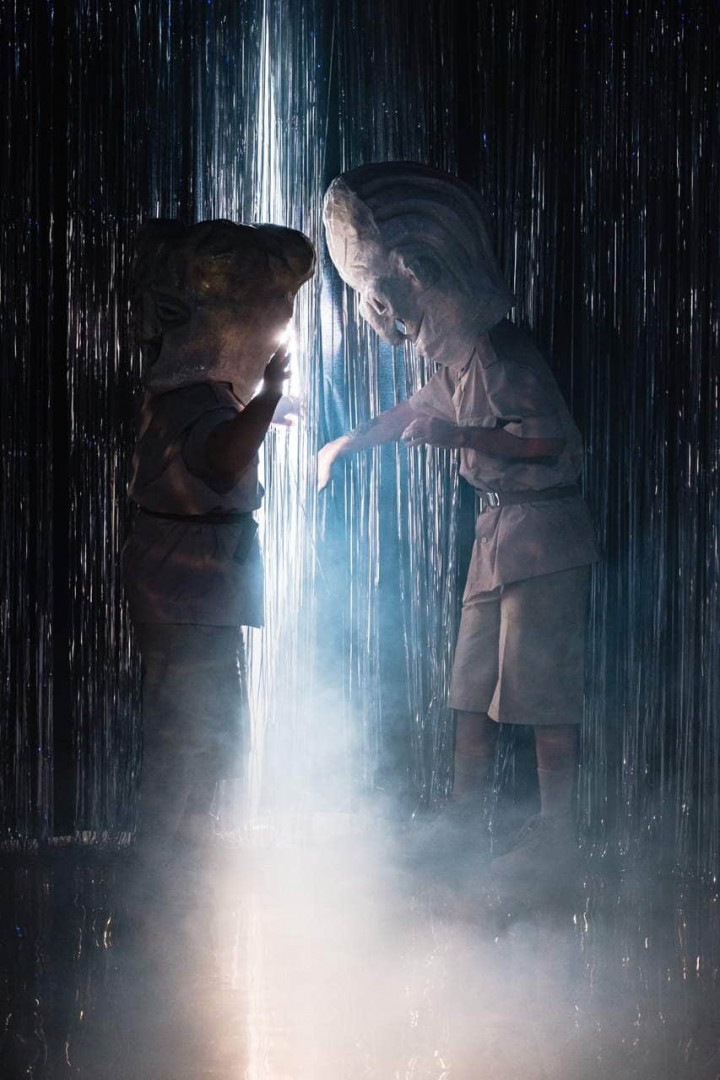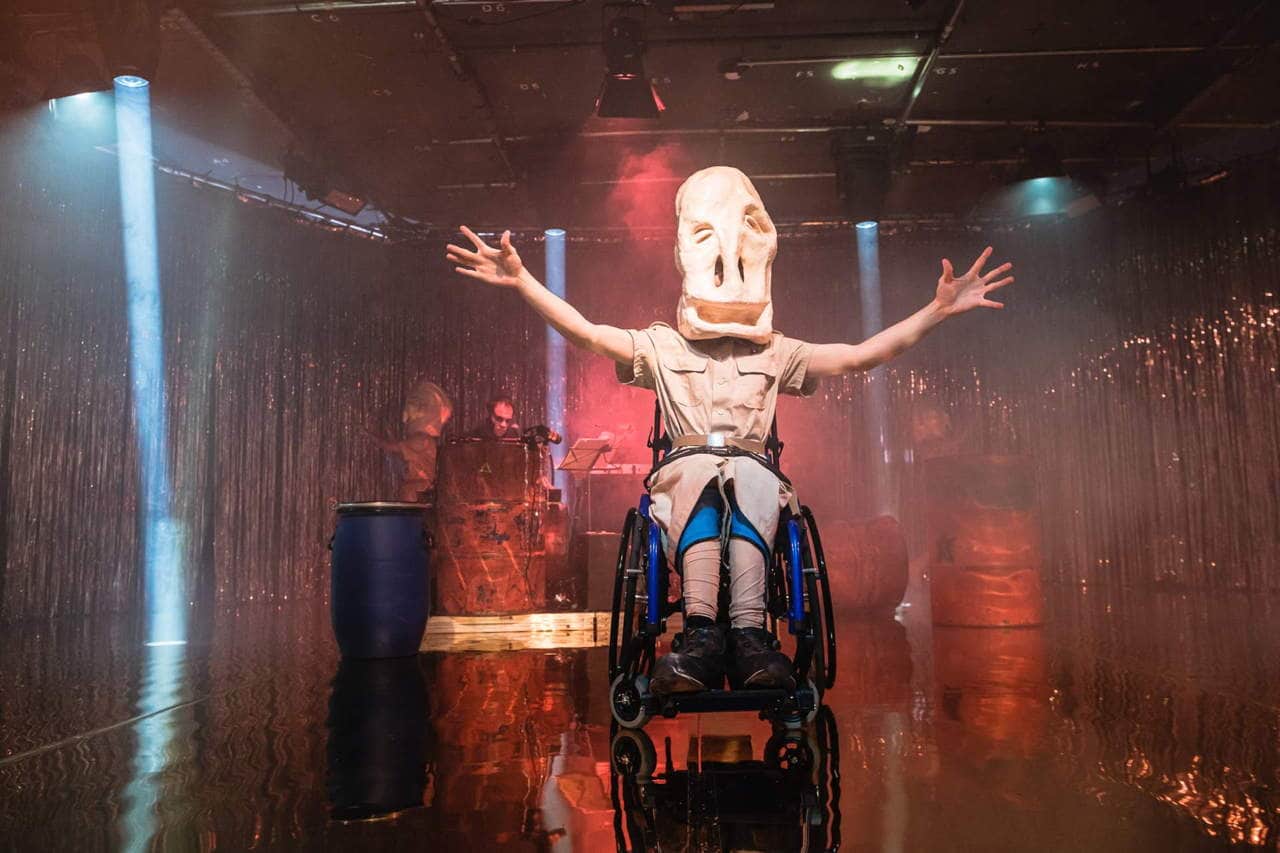Regional Express Directed by: Milan Peschel
(It Burns) Directed by: Jacob Höhne
nach Alban Berg Directed by: Jacob Höhne
oder Die Sprache der Blumen Directed by: Gisela Höhne
#createyourown Directed by: Sandra Rasch
Directed by: Jacob Höhne
Things have finally come to a head: The blue planet has changed color. The last tree has been cut down, the last river has been poisoned, and the last fish has been caught – and the solar system is now home to a brand new desert planet. It took a lot of time and effort, but the Homo sapiens were able to verify the accuracy of the Cree proverb: One cannot eat money. The Homo sapiens tried and the Homo sapiens are now dead. The Earth is not only free of them – it’s also free of every other living creature because there’s no more water left. Not a single drop. “GAIA FOR SALE” it says in bold letters on a sign in the middle of a completely parched landscape.
Other beings in the galaxy can’t help but notice this, and pretty soon a nomadic alien tour group arrives – with a colonial-like attitude. For them, the end of humanity offers an opportunity to acquire property and settle down for good: “It’s a fuckin’ party, let’s have some fuckin’ techno!” There’s no better place for this than the remains of a theater. But what’s this? Someone’s still here. Styx, the river of the dead, flows through the tinsel on the stage and speaks and speaks and doesn’t stop speaking. Unless one of its tributaries can contain it, that is. That would be Kokytos or Lethe, which are just as dried up as the main river. A few dead – the “Bones” – are also still around. That’s all those who couldn’t be sent across the river because there was no water left in it. Now there is a problem – namely who does this damn planet belong to? And who has a right to the natural resources when there’s no longer enough for everyone?
The world flames like a discokugel (styx spricht) is the first drama written together by actress and author Mateja Meded and playwright Thomas Köck. The play was created within the framework of a partnership between RambaZamba, the AnthropoScenes project, and the AnthropoScenes Theater. The AnthropoScenes project is funded by Germany’s Ministry of Education and Research (BMBF) and the City of Berlin via the Berlin University Alliance as part of the Excellence Strategy program in Germany.
The masks in the production were made by the Werkstattkollektiv Berlin workshop collective using sculptures created by Eberhard Pastow.





„Und die Spieler:innen von RambaZama: Sie sind in super Form. Viel Physical Theatre ist dabei, Revue-Nummern von schönster, beißender Harmonie.“ Stephanie Drees, nachtkritik.de
„Regisseur und Theaterintendant Jacob Höhne hebt in seiner direkten, bildhaften Regie die Tragik des versandeten Planten auf minimalistische Bühne. Ein eingespieltes Ensemble bringt den brandaktuellen Stoff zu Punk-Rock-Sound zum Brodeln. Fazit: „Hitzige“ Theatererfahrung mit vielschichtigem Mehrwert, hoffentlich auch hierzulande zu sehen.“ Tina Perisutti, Kronenzeitung (Österreich)